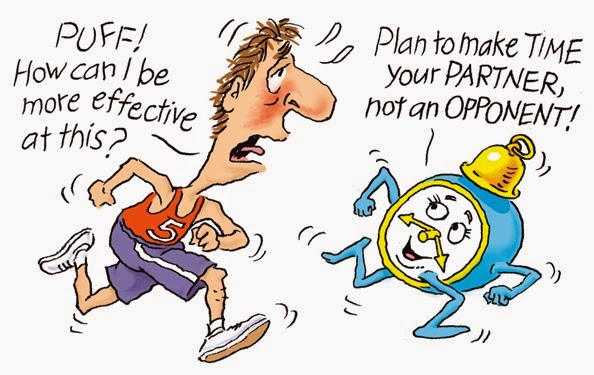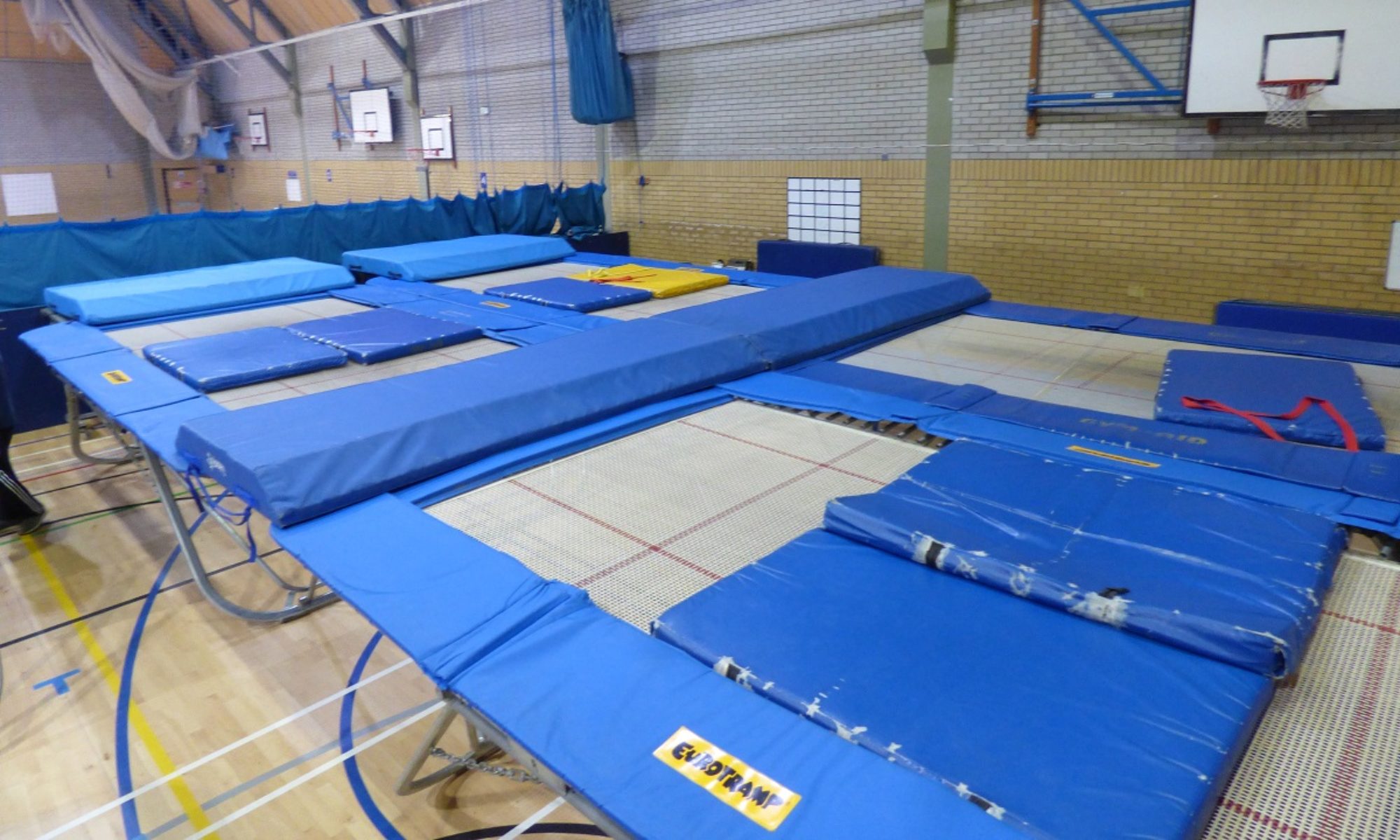Some Thoughts on Time Management

I’m sure we are all familiar with the statement
lt’s not the hours you put in but what you put in the hours that counts.
This principle, which holds true in most areas of life, is particularly relevant to the preparation of high-level athletes. In swimming for example there can be a temptation to bestow virtue on the distance swum per session instead of the quality of work achieved within the session.
Distance is such a convenient and easily measured performance monitor making it all the more seductive and misleading as a true measure of effective training. When I was a coach preparing national standard age group swimmers I must confess that I felt a certain satisfaction when my squad regularly covered 20 miles a week, although I always had to remind myself to guard against “garbage yardage!”
Many trampoline coaches and gymnasts enjoy being able to boast of training 24 hours a week or even as little as 8 hours a week (both real examples incidentally). The fact is that the number of hours spent in the gym is a very poor measure of effectiveness and even if we do compare 24 hours with 8 hours we aren’t necessarily comparing like with like.
Training Hours
There are many issues around the number of ‘training’ hours but let us look at the simple logistics of a typical club session.
For the purpose of the exercise let’s assume five trampolinists on one trampoline for one hour. Five performers dividing their time equally between sixty minutes provides twelve minutes ‘training’. However we also need to consider change-over time which, if the group are on the ball, is about twenty seconds per change. This reduces the available time to fifty-six minutes and each gymnast’s “training” time reduces to around eleven minutes.
If the equipment also has to be set up and dismantled within the period – well let’s not go there!
It is reasonable to estimate that with actual performance and coaching feedback, each gymnast will spend two minutes per go. So in one hour each gymnast can expect less than six opportunities to train or practice their skills. This is all based on the false premise that the coach will allow exactly the same time for each pupil but we know that different individuals require varying amounts of attention at different times thereby distorting the simplistic calculation.
I have laboured this point somewhat in order to draw attention to the very poor value obtained from many sessions. It concerns me greatly that our sport is often sold very badly in leisure centres where the ratio can be eight or even ten pupils to a single trampoline and worse, in school classes with as many as twenty pupils per bed.
Club Environment
That is a topic for another occasion so let me return to the club environment and look at how we might make sessions more productive. The simplest way is of course to reduce the number of gymnasts per tramp, but I realise this is not just a matter of logistics and there may be financial or even philosophical issues to consider. Many clubs exist primarily for recreation and have no serious competitive ambitions beyond the lower grades. Indeed not all coaches are aiming to produce world-class performers and may be very happy with their pupils “training” for only eleven minutes in the hour.
Forgive me if I focus my attention on the sharp end of the sport where, as ex-Liverpool manager Bill Shankley used to say,
Winning isn’t a matter of life and death – it’s more important than that!
I have found three to one trampoline a very effective number, where one gymnast is on the trampoline, one has just got off and is filling in the training diary and the other is focussing prior to their next attempt. This involves all three gymnasts in a continuous round of physical or mental activity, all targeted at improving performance and enabling the coach to create a fertile learning environment. An essential ingredient in all training is programmed rest and the three to one tramp balance provides a work/rest ratio of one to two, well suited to an activity so reliant on the long term anaerobic system.
Devil finds work
Returning to the five gymnasts per unit scenario, the rest element becomes disproportionate and as they say “The Devil finds work for idle hands.” That may sound a bit strong but the “switch off” effect caused by an eight-minute rest period between units of work can be highly detrimental in terms of attitude, motivation, continuity, focus and physiological cooling. Four gymnasts idle (or resting) at one time opens up opportunities for conversation and distraction which simply don’t exist in the three to one model.
It is nonetheless possible to create a positive work environment with five gymnasts to a trampoline by developing the three to one principle of keeping everyone purposefully employed. Gymnast one performs on the tramp, gymnast two, having just finished, fiIls in the training diary. Gymnast three works on a trampoline related floor exercise while Gymnast four works on a contrasting floor exercise. Gymnast five, having completed the circuit, waits by the trampoline, focussing on their next performance. Everyone is occupied in a positive and constructive manner with the entire focus on high performance, distractions are minimised and the coach can have complete control of the gymnasts’ quality and quantity of work. (See Fig 1)

In the illustration, the coach takes care of the spotting duties on one side with gymnast five on the other. Gymnast two is diarising close enough to the coach to seek advice or even be told what to record from the performance just finished. The coach is in a position to see the gymnasts exercising on the floor and to ensure the quality of their performance. With younger performers I would normally stand on the side frame to provide a more commanding view and to facilitate stepping onto catch or otherwise manually support.
It is essential that all gymnasts in the group learn the chosen exercises thoroughly to ensure their faultless execution and that a wide range of exercises are included to maintain interest and broaden the conditioning effect. The exercises must be sufficiently demanding to produce a benefit but not so exhausting as to impair trampoline performance and may add to the recovery from anaerobic trampoline work.
Sports Physiologist
Simon Breivik, a sports physiologist working with the National Squad identified that trampolinists working on routines, but using passive rest (normally sitting) accumulated a lactate concentration of 1 7mmols/L after a 50-minute session. He attributed this high figure to the “lactate stacking” effect caused by lactate production during the anaerobic activity and the failure of the gymnast to process the lactate during the sedentary period between performances. He recommended;
Trampolinists should maximise their recovery and subsequent performance by reducing the amount of lactic acid in their muscles and blood by performing active recovery during rest between bouts on the trampoline.
Regarding the intensity of active recovery work, Breivik pointed out intensity at which active recovery should be performed is important. Exercising too lightly will not produce the desired effect of lactate removal, whereas exercising too intensely is likely to cause more lactate production. Studies have shown that working below 65% of maximum heart rate is most profitable.”
So in terms of effective time management, the recommended way of operating a five to one trampoline set-up can have benefits far beyond simply occupying “idle hands.”
In the next edition I will look in more detail at time management and Simon Breivik will discuss the physiological aspects of trampoline work and recovery.
© Jack Kelly

